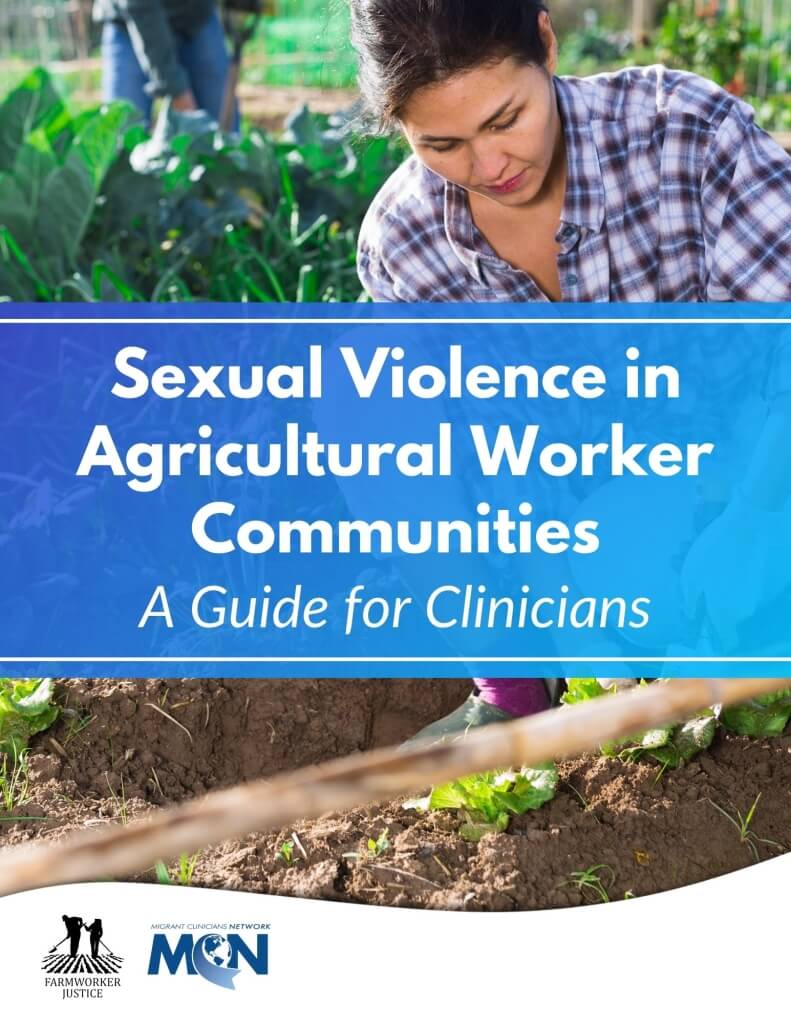
Sexual violence continues to be a significant and widespread issue in the agricultural workplace, yet many survivors do not get the medical and legal assistance they need. Of the estimated 2.4 million agricultural workers in the United States, approximately one-third identify as female. While sexual violence can happen to anyone, most of the occurrences of sexual violence are perpetrated against women. Many agricultural workers may be reluctant to disclose sexual violence or seek help from clinicians or others for numerous reasons. Fear is a primary motivator. Across many cultures, stigma may be attached to the survivors of sexual assault and acts of sexual violence may be normalized. Further, communication barriers due to language, cultural norms, or a lack of comfort and trust in the exam room may prevent an agricultural worker from attempting to convey such an emotional or painful occurrence. Agricultural workers who experience sexual violence are often already experiencing a workplace power imbalance, and many workers are reluctant to report the perpetrator for fear of workplace retaliation; others do not believe there is any recourse for which they are eligible or that would be worth exposing the incident. Of course, the many barriers to accessing health care of any kind – poverty, lack of transportation, poor integration into the community, lack of familiarity with the health care system – reduce survivors’ opportunities to discuss the incident and find support. For these and other reasons, only a fraction of estimated incidents of sexual violence in agriculture are disclosed.
A new clinicians’ guide provides in-depth support, best practices when receiving a report of sexual violence, and a basic primer on legal options, so that clinicians at community health centers are equipped to support agricultural worker survivors. “Sexual Violence in Agricultural Worker Communities: A Guide for Clinicians,” is an 11-page full-color guide developed by Farmworker Justice and Migrant Clinicians Network and available in English and Spanish. Questions answered include “How will you know if your patient has experienced sexual violence?” and “How can you support survivors of sexual violence?” The guide also features survivor stories and short quotes from community health workers and agricultural worker advocates. A section called, “What legal options are available for survivors?” provides clinicians with next steps, from recommended documentation and reporting, to a chart of legal avenues available to agricultural workers.
Access the new clinician’s guide:
Other Resources
- Hombres Unidos is MCN’s peer-led five-session curriculum where men from the community teach fellow men about family violenc. The popular curriculum is aimed at primary prevention of sexual and intimate partner violence in the Latinx migrant community: https:/www.migrantclinician.org/disabled/hombres-unidos-contra-la-violencia-familiar.html.
- Farmworker Justice’s list of multilingual resources on sexual violence in agricultural worker communities: https://www.farmworkerjustice.org/resource-categories/sexual-harrassment-violence.
- Sexual Violence Against Farmworkers: A Guidebook for Social Service Providers from Southern Poverty Law Center: https:/www.splcenter.org/sites/default/files/d6_legacy_files/downloads/publication/OVW_SocialServiceProviders.pdf.
- Understanding Male Socialization, Stigma, and Reactions to Sexual Violence, from the National Sexual Violence Resource Center: https:/www.nsvrc.org/working-male-survivors-sexual-violence/Understanding